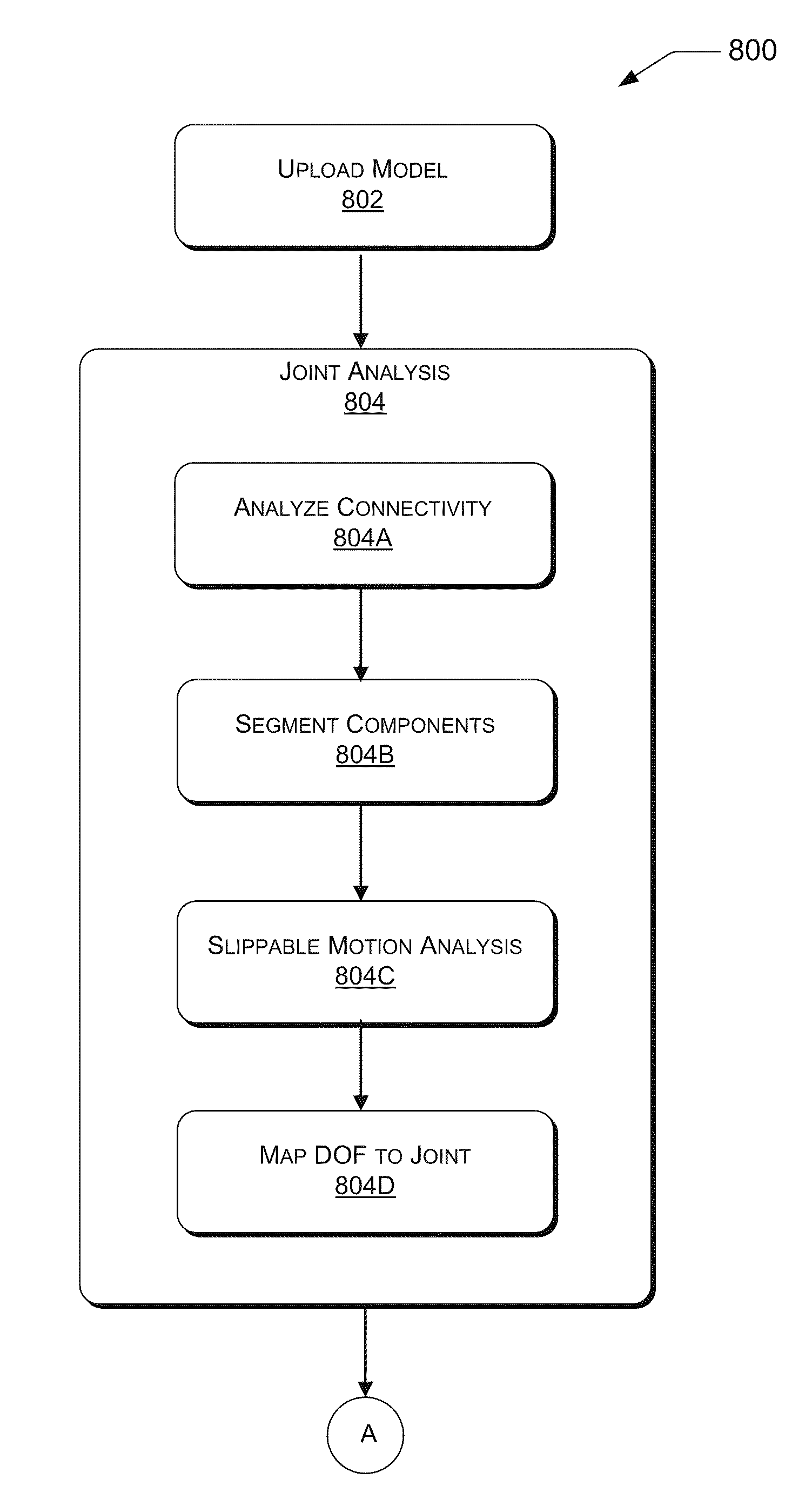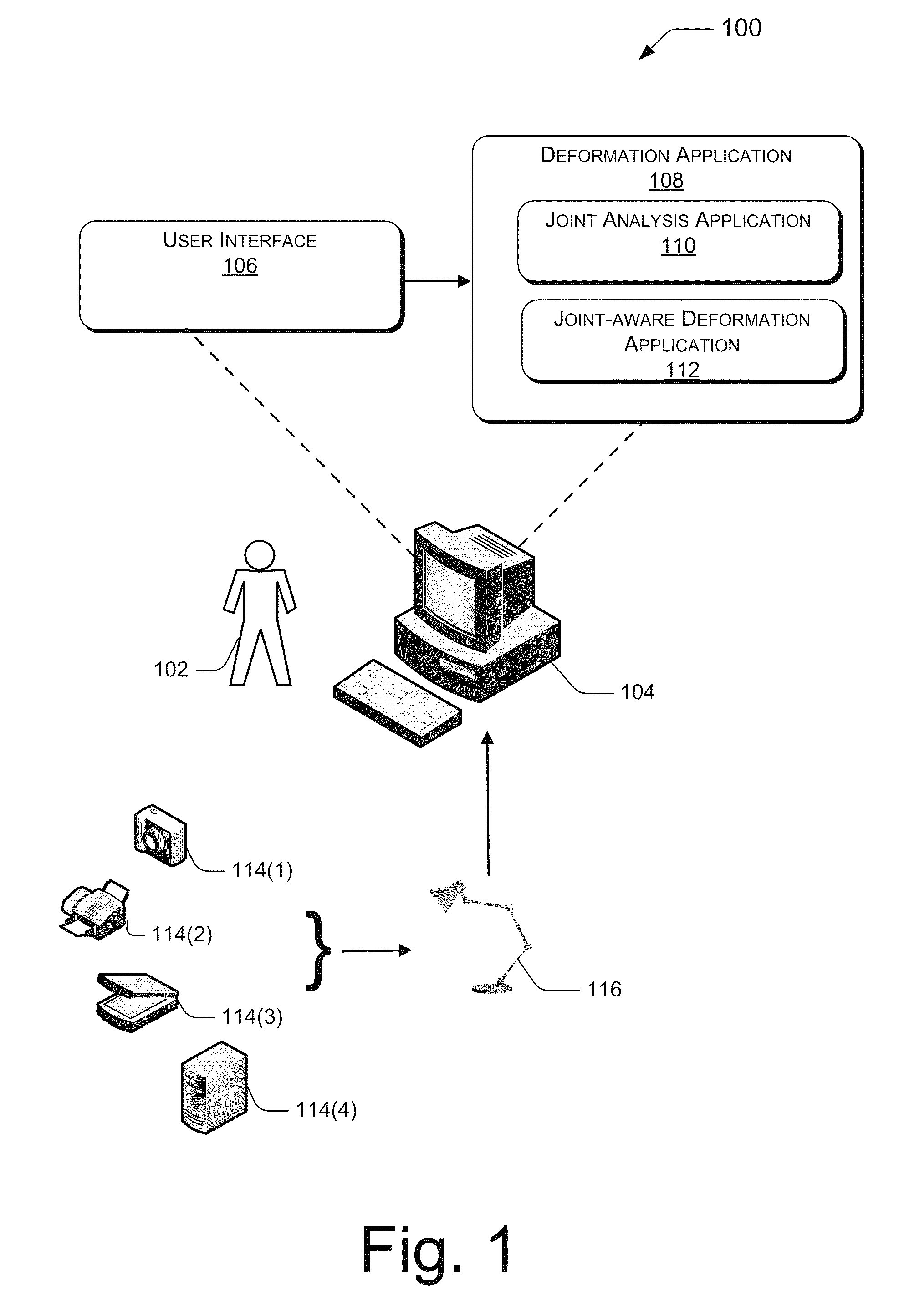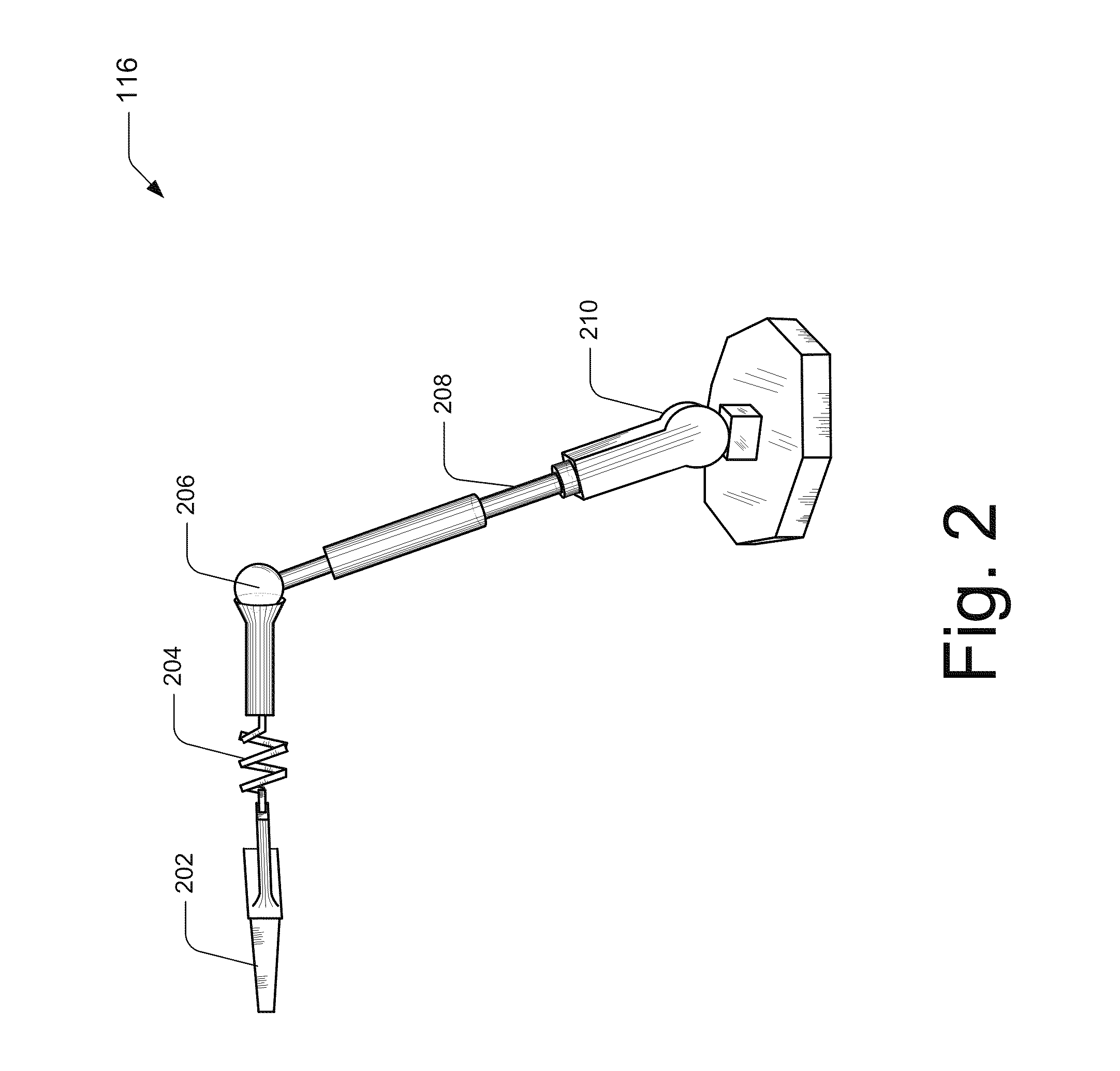Joint-Aware Manipulation of Deformable Models
a deformation model and model technology, applied in the field of space deformation algorithms, can solve the problems of time and expense for animators to set up joint constraints, model deformation may be problematic, etc., and achieve the effect of reducing costs
- Summary
- Abstract
- Description
- Claims
- Application Information
AI Technical Summary
Benefits of technology
Problems solved by technology
Method used
Image
Examples
Embodiment Construction
As described above, this disclosure describes model deformation. This disclosure describes how a user may achieve a desired deformation on a joint aware model or the deformation may be performed automatically based on computer-executable instructions.
In one implementation, a connectivity of a model may be analyzed and separated into a first component and a second component. An intersection point or a contact surface for the first component and the second component are determined and used to calculate a slippable motion between the first component and the second component. The slippable motion calculation determines one or more degrees of freedom between the first component and the second component and may be mapped to a corresponding joint type.
In another implementation, a deformation framework comprises a joint analysis application and a joint aware application. The joint analysis application includes an intersection surface detection, a slippable motion analysis, a range of motion...
PUM
 Login to View More
Login to View More Abstract
Description
Claims
Application Information
 Login to View More
Login to View More - R&D
- Intellectual Property
- Life Sciences
- Materials
- Tech Scout
- Unparalleled Data Quality
- Higher Quality Content
- 60% Fewer Hallucinations
Browse by: Latest US Patents, China's latest patents, Technical Efficacy Thesaurus, Application Domain, Technology Topic, Popular Technical Reports.
© 2025 PatSnap. All rights reserved.Legal|Privacy policy|Modern Slavery Act Transparency Statement|Sitemap|About US| Contact US: help@patsnap.com



